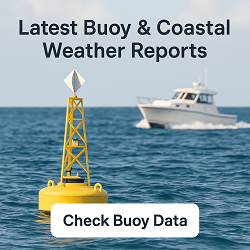Lincoln County, MO Weather Forecast and Current Conditions
Current Conditions From Nearby Station

Feels Like 41°F
at
Current Conditions From Nearby Station

Feels Like 41°F
at
Point Forecast at a Glance







7-Day Temperature Trend
Week Ahead Summary
Variable high temperatures through the week, ranging from 49°F to 68°F. Some rain possible with at least 2 days showing precipitation chances of 20% or higher.
Climate Context
This week's forecast shows temperatures running 7°F above the historical average for November. Normal highs for this period are around 55°F with lows around 35°F.
This Date in Weather History
1861 - A hurricane near Cape Hatteras, NC, battered a Union fleet of ships attacking Carolina ports, and produced high tides and high winds in New York State and New England.
More on this and other weather history
Lincoln County 7 Day Weather Forecast Details
Saturday Nov 1

Day: Isolated rain showers after 1pm. Partly sunny, with a high near 49. Northwest wind 2 to 7 mph. Chance of precipitation is 20%.

Night: Isolated rain showers before 7pm, then widespread frost. Partly cloudy, with a low around 31. Northwest wind around 5 mph. Chance of precipitation is 20%.
Sunday Nov 2

Day: Widespread frost before 8am. Sunny, with a high near 53. West wind around 3 mph.

Night: Clear, with a low around 37. Southwest wind around 5 mph.
Monday Nov 3

Day: Sunny. High near 63, with temperatures falling to around 59 in the afternoon.

Night: Mostly clear, with a low around 39.
Tuesday Nov 4

Day: Mostly sunny, with a high near 68.

Night: Mostly clear, with a low around 49.
Wednesday Nov 5

Day: Sunny, with a high near 68.

Night: Clear, with a low around 41.
Thursday Nov 6

Day: Sunny, with a high near 66.

Night: A slight chance of rain after midnight. Partly cloudy, with a low around 50. Chance of precipitation is 20%.
Friday Nov 7

Day: A slight chance of rain. Mostly sunny, with a high near 65. Chance of precipitation is 20%.
Sun & Moon Monthly
Sunrise 7:32 AM
Sunset 6:04 PM
Last Light 6:32 PM
Moonset 2:46 AM

Contiguous United States Extremes
Fri's High Temperature
96 at 6 Miles West-southwest Of Glamis, CA
Fri's Low Temperature
3 at Crested Butte, CO
Weather Folklore
When clouds look like black smoke, a wise man will put on his cloak..
Current subscribers - login to your ClearSky account
About Lincoln County, Missouri
Lincoln County is located in the eastern part of the U.S. state of Missouri. As of the 2020 census, the population was 59,574. Its county seat is Troy. The county was founded December 14, 1818, and named for Major General Benjamin Lincoln of the American Revolutionary War. Lincoln County is part of the St. Louis, MO-IL Metropolitan Statistical Area.
Content from Wikipedia, licensed under CC BY-SA 3.0.
How We Provide Better Local Weather
Current conditions: We use the nearest available station to your location - including professional MESONET/MADIS and local weather stations - often miles closer than regional airports.
Forecasts: National Weather Service point forecasts predict for your specific area, not broad regional zones, making them far more relevant to your location.

